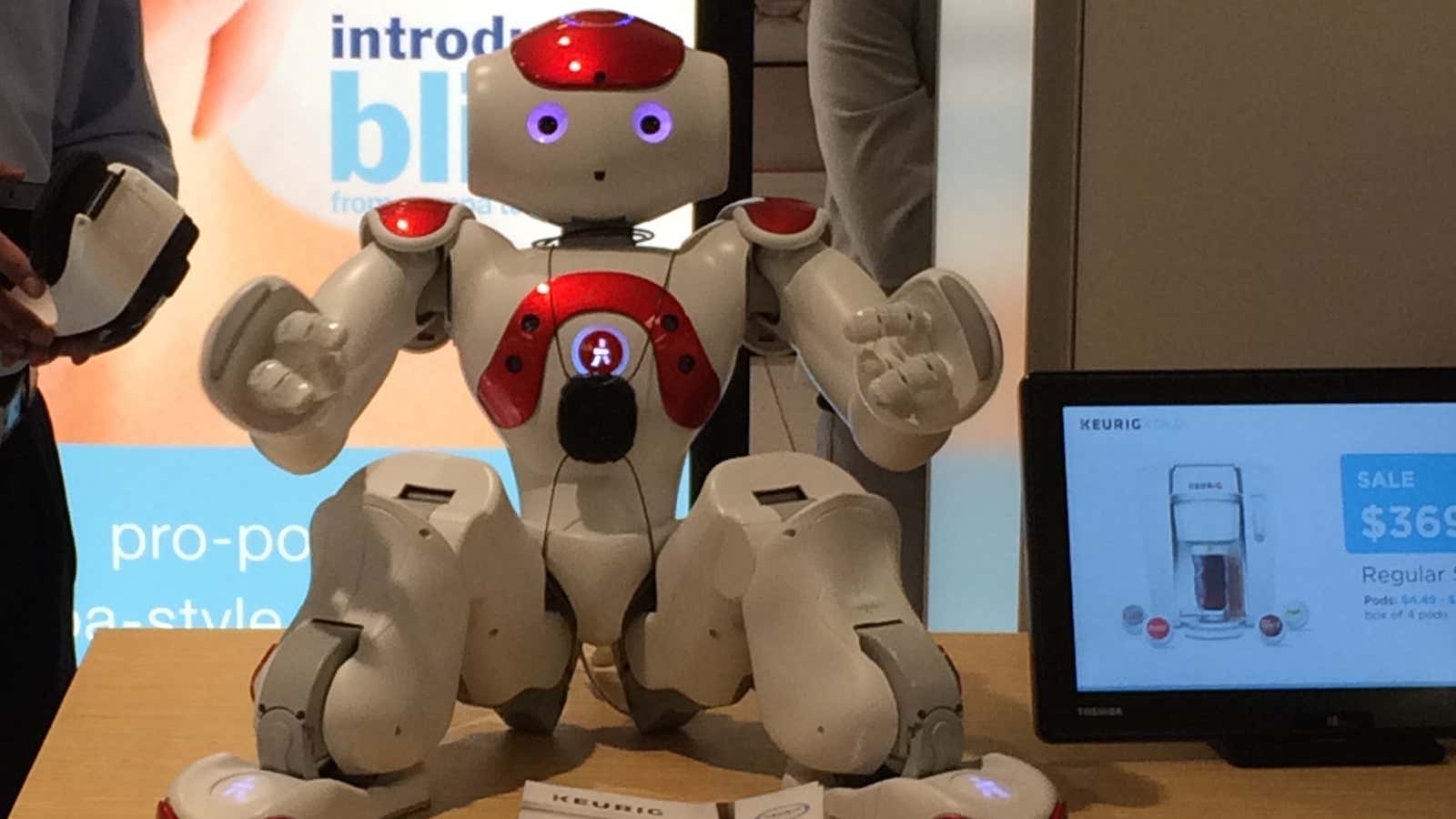Two years ago, Kohl’s plucked a small crop of IT staffers from its Wisconsin base and planted them in Milpitas, California—smack dab in the middle of Silicon Valley. The group of engineers and designers was tasked with boosting online sales—which are growing but no longer broken out in earnings—and other projects, like process automation and revamping Kohls.com. In essence, they needed to think more like a tech startup than a retailer.
Today, the department-store chain’s 50,000-square-foot digital hub, which has already grown to 200 employees from 30, is experimenting with everything from beacons and RFID tags to drones, robots, and self-driving cars.
Kohl’s stepped up its research and development—investing $1 billion over the last three years in technology—to avoid falling behind Amazon and other tech companies like Google and Facebook that are rapidly altering consumer expectations.
While the average Kohl’s bargain shopper may not currently seem like the target audience for drone or autonomous-car deliveries, there’s no telling what the future holds. The company is looking three to five years ahead to prepare for the eventuality that customers will grow so accustomed to today’s fledgling technology that they’ll become retail norms.
“We don’t want to ever fall behind,” Ratnakar Lavu, Kohl’s executive vice president of digital technology, told Quartz at a recent press briefing. “If Amazon were to change those customer expectations, we have to be there. … We’re testing so that when the time is right, we’re not behind and we know exactly how to do it. ”
The discount retailer plans to spend another $1 billion over the next several years on technology, including things like biometrics and artificial intelligence that won’t have an immediate impact on business.
Kohl’s is not alone. Dozens of retailers, including Staples, Target, and Lowe’s, have innovation labs designed to find the next big thing in retail before Jeff Bezos does, or at the very least, help adapt to whatever he throws at them. Retailers, caught so off-guard by the meteoric rise of e-commerce over the last decade that it took years to get back on track, are compulsively fighting to stay ahead of unforeseen obstacles that could veer them off course again.
“Traditionally, we’ve been a little bit behind in technology,” said Lavu. “We caught up, but we’re also thinking about what does the next three years, five years look like.”
Take, for example, Amazon’s experiments with drones for fast, personalized delivery. Kohl’s expects the Federal Aviation Administration to clear the way for trials within the next year and is exploring how the technology could improve its own delivery system. It’s also looking at driverless cars as a potential mode of delivery. (To test the retail applications of those devices, Kohl’s is partnering with tech companies, not building its own.)
And with more and more transactions taking place online, and firms like UPS and FedEx struggling to cope with the volume, new shipping vehicles are more important than ever.
Kohl’s is also exploring technology’s role in automating repetitive in-store tasks, freeing up workers to better assist shoppers.
Enter: Robots.
The retailer tapped NAO Robot, best known for performing the “History of Dance,” to assist Kohl’s staff by telling customers about featured products. During a recent press tour of Kohl’s Jersey City, New Jersey, location, the two-foot-tall robot gave reporters a brief introduction to a Keurig machine. Kohl’s ultimately aims for the robot, which has not rolled out in stores yet, to make and hand out drink samples. And, in the next five to 10 years, future models might assist with checking and stocking inventory, among other chores, Lavu said.
The retailer is also building a virtual-shopping experience—three to five years out—that simulates a traditional retail environment, so customers can shop on mobile devices or gaming systems as they do in stores now.
“We want to be ready when the technology takes off,” said Lavu. “When Facebook Oculus or Microsoft HoloLens enables purchasing within this environment, we will be able to do that too.”
Not all retailers are having success putting dollars into far-flung ideas. This year, upscale department-store chain Nordstrom scaled down its innovation lab to concentrate on specific customer needs that actually move the needle for the business.
Although Kohl’s is experimenting with some not-ready-for-primetime projects, the core of its digital center is devoted to products or services that could roll out as early as next year.
The innovation lab focuses on five key areas: bringing digital technology into stores; data analysis and gathering with Internet of Things; gadgets like robots, drones, and autonomous cars; and advanced computing, which includes virtual reality and artificial intelligence.
The retailer is testing beacons and RFID tags in stores to help customers locate products with the Kohl’s mobile app. It developed what it calls a “digital hanger”—slated to hit stores in 2016—that recommends styles for whatever item is scanned, prints out a list of the items you like, and shows you to where to find them in the store. And it created a price checker that incorporates reviews and recommendations, and factors coupons or rewards points into the price check, so customers know what they’re paying before getting to the register.
